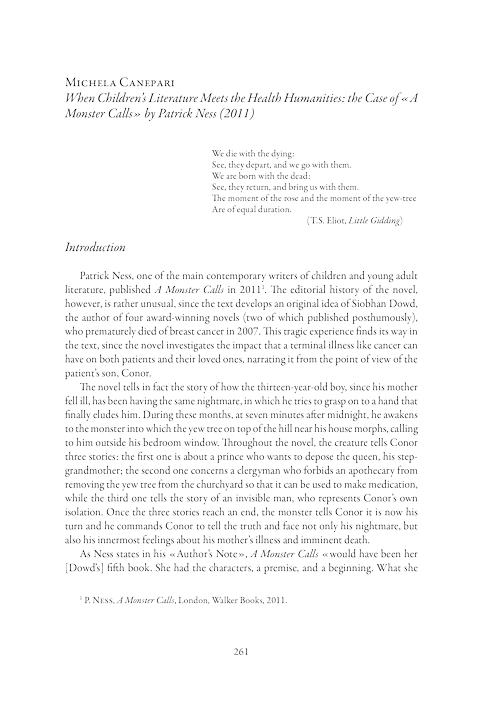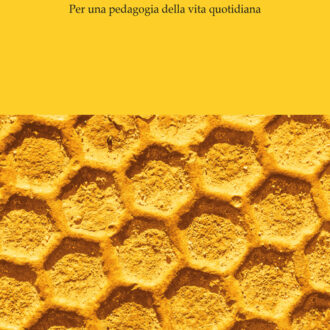ABSTRACT
The aim of this article is to analyse Patrick Ness’s novel A Monster Calls (2011) and the film that translates it intersemiotically (2016), in order to emphasise that – while undoubtedly belonging to young adult literary and cinematographic production – both novel and film should be regarded as medical pathographies and bibliotherapy resources (Shechtman, 1999) which, as examples of narrative and graphic medicine (Charon 2006), help patients and the people who take care of them cope with a terminal illness like cancer.
Indeed, even though the title and the opening lines of both texts seem to assign them to the “horror” genre, they progressively assume the form of actual narrative, graphic and filmic pathographies, describing the strategies that the young protagonist Conor, whose mother finally dies of cancer, adopts to come to terms with this traumatic experience. As such, these products demonstrate how, as neuroscience suggests, the type of controfactual thought (Roese 1997; Byrne 2016) they stimulate become important coping mechanisms.
Both the narrative and filmic versions of A Monster Calls therefore represent a cross between different “cultures” (scientific and humanistic), different levels of culture (the visible traits of the illness and the invisible effects it has on patients and their families) and different genres (narrative, graphic and filmic texts) and, by crossing different “borders”, they should be considered as products which, on the one hand, clearly belong to children literature, while on the other can be clearly identified as products of the Medical Humanities, whose interdisciplinarity allows for a constant revision and broadening of its boundaries.
Key words: intersemiotic translation, film adaptation, patografia, Medical Humanities
L’obiettivo di questo articolo è analizzare il romanzo di Patrick Ness A Monster Calls (2011) e il film che lo traduce intersemioticamente (2016), sottolineando come – pur appartenendo indubbiamente alla produzione letteraria e cinematografica per bambini e adolescenti – tanto il romanzo quanto il film debbano essere considerati come patografie mediche e risorse di biblioterapia (Shechtman, 1999) che, come esempi di medicina narrativa e grafica (Charon 2006), aiutano i pazienti e le persone che si prendono cura di loro ad affrontare una malattia terminale come il cancro.
Infatti, nonostante il titolo e l’incipit di entrambi i testi sembrano assegnarli al genere horror, essi assumono progressivamente la forma di vere e proprie patografie narrative, grafiche e cinematografiche, descrivendo le strategie che il giovane protagonista Conor, la cui madre al termine della narrazione muore di cancro, adotta per gestire questa esperienza traumatica. Come tali, questi prodotti dimostrano, come suggeriscono le neuroscienze, l’importanza del tipo di pensiero controfattuale (Roese 1997; Byrne 2016) che essi stimolano.
Tanto la versione narrativa quanto quella filmica di A Monster Calls rappresentano quindi un incrocio tra diverse culture (scientifica e umanistica), diversi livelli di cultura (i tratti visibili della malattia e gli effetti invisibili che essa ha sui pazienti e sulle loro famiglie) e diversi generi (narrativi, grafici e filmici) e, attraversando diversi ‘confini’, vanno considerati come prodotti che, da un lato, appartengono chiaramente alla letteratura per l’infanzia, mentre dall’altro possono essere chiaramente identificati come prodotti delle Medical Humanities, la cui interdisciplinarità permette una costante revisione e ampliamento dei propri confini.
Parole chiave: traduzione intersemiotica, adattamento cinematografico, patografia, Medical Humanities












Recensioni
Ancora non ci sono recensioni.